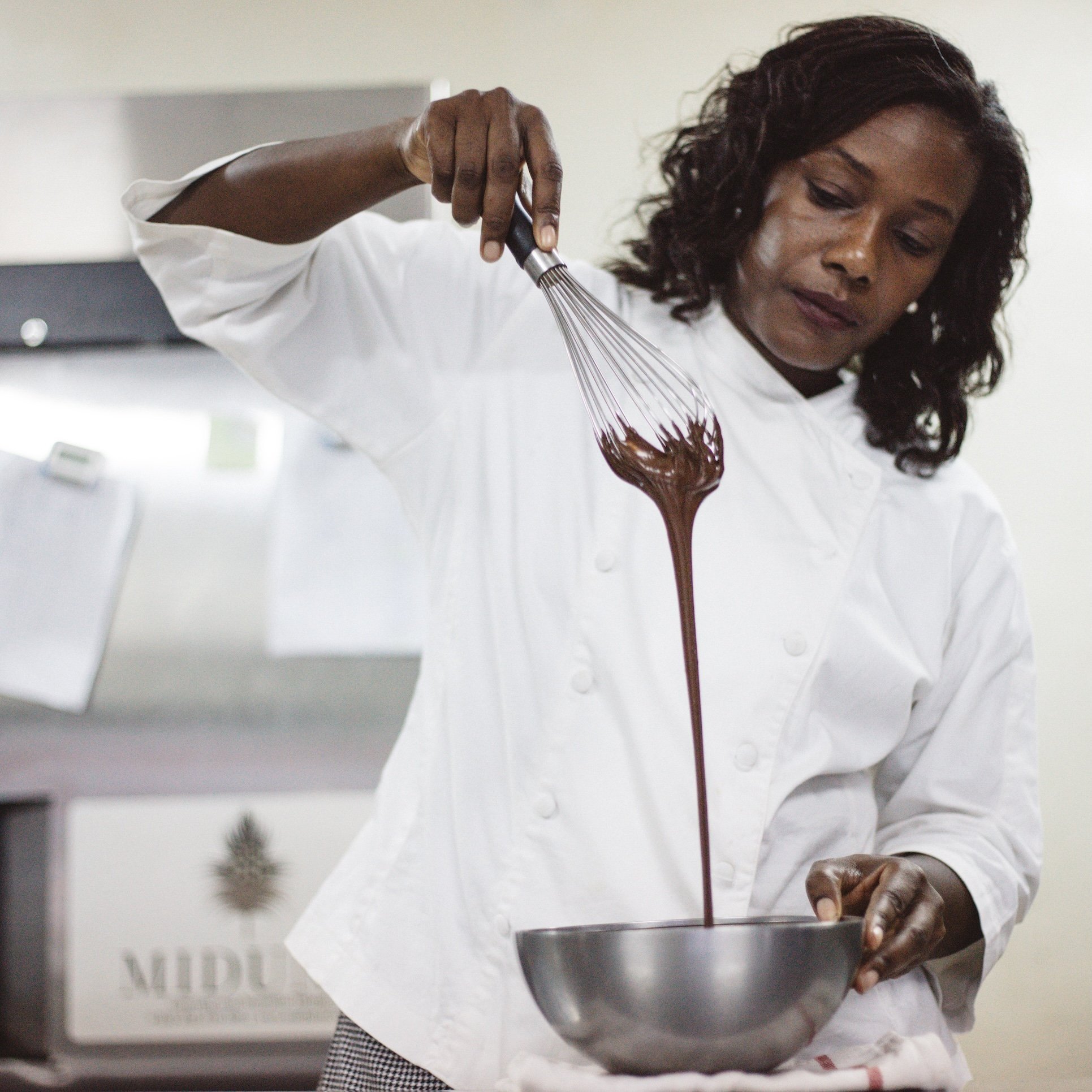Building Chocolate at Origin: The Reality, The Challenge, & The Future
Chef Selassie Atadika making ganache, Midunu Chocolates
The Final Bite That Became a Business
It started as a simple final course—a mignardise to close out my dining experiences.
Chocolate truffles, handcrafted in my kitchen.
Infused with West African ingredients.
Made in Ghana, a cocoa-producing country.
I wasn’t trying to launch a chocolate company. I just wanted to offer guests a taste of something uniquely ours.
But then, something unexpected happened.
People didn’t just love the truffles. They wanted to buy them.
They wanted to take them home, gift them, experience them beyond the dining table. They wanted something that, until then, barely existed—high-quality, luxury chocolate made in Ghana.
That’s how Midunu Chocolates was born.
The Reality Check: Making Chocolate in Ghana Isn’t Easy
Then, reality hit.
The chocolates had a three-month shelf life. No retailer wanted to stock a product with such a short window.
Ghana’s heat and humidity made chocolate incredibly difficult to transport. Delivering chocolates without melting required an entirely different strategy.
Making chocolate at origin wasn’t just about the craft—it was about infrastructure. And that infrastructure didn’t exist in a way that supported small, premium chocolate brands.
Still, we pushed forward.
The Breakthrough: Chocolate at Origin Goes Global
In 2020, we started exporting to the U.S.—a major milestone.
The world was beginning to have serious conversations about structural injustice in food, trade, and labor.
People were waking up to the imbalance in cocoa production:
Ghana and Ivory Coast produce over 60% of the world’s cocoa.
Less than 5% of the world’s chocolate is made at origin.
Most cocoa farmers have never tasted fine chocolate made from their beans.
And yet, despite all of this, African chocolate brands remained almost invisible in the premium space.
For the first time, it felt like the world was starting to understand why making chocolate at origin mattered.
The Setback: COVID, Costs, and Global Supply Chain Chaos
Then, the pandemic hit.
Shipping costs skyrocketed, making it harder to send chocolate abroad.
Global supply chains collapsed, causing delays and disruptions.
Ingredients became harder to source, impacting production.
Demand for Midunu Chocolates kept growing, but the logistical hurdles made scaling more challenging than ever.
How We Innovated and Adapted
To make this vision a reality, we had to adapt, innovate, and rethink everything.
We extended the shelf life of our best-selling truffles to three months, allowing us to sell more consistently.
We introduced drinking chocolates—crafted with the same care and bold flavors as our truffles but with an 18 to 24-month shelf life, making them easier to distribute internationally.
Two of our drinking chocolates have now won international chocolate awards.
An Invitation to Partner
We are looking for like-minded cafés, hotels, and restaurants that value single-origin, ethically sourced drinking chocolates—products that don’t just taste good, but tell a story.
📍 If you’re interested in bringing award-winning African-made drinking chocolate to your menu, let’s talk.
➡ For more on how we’re rethinking chocolate at origin, explore!
